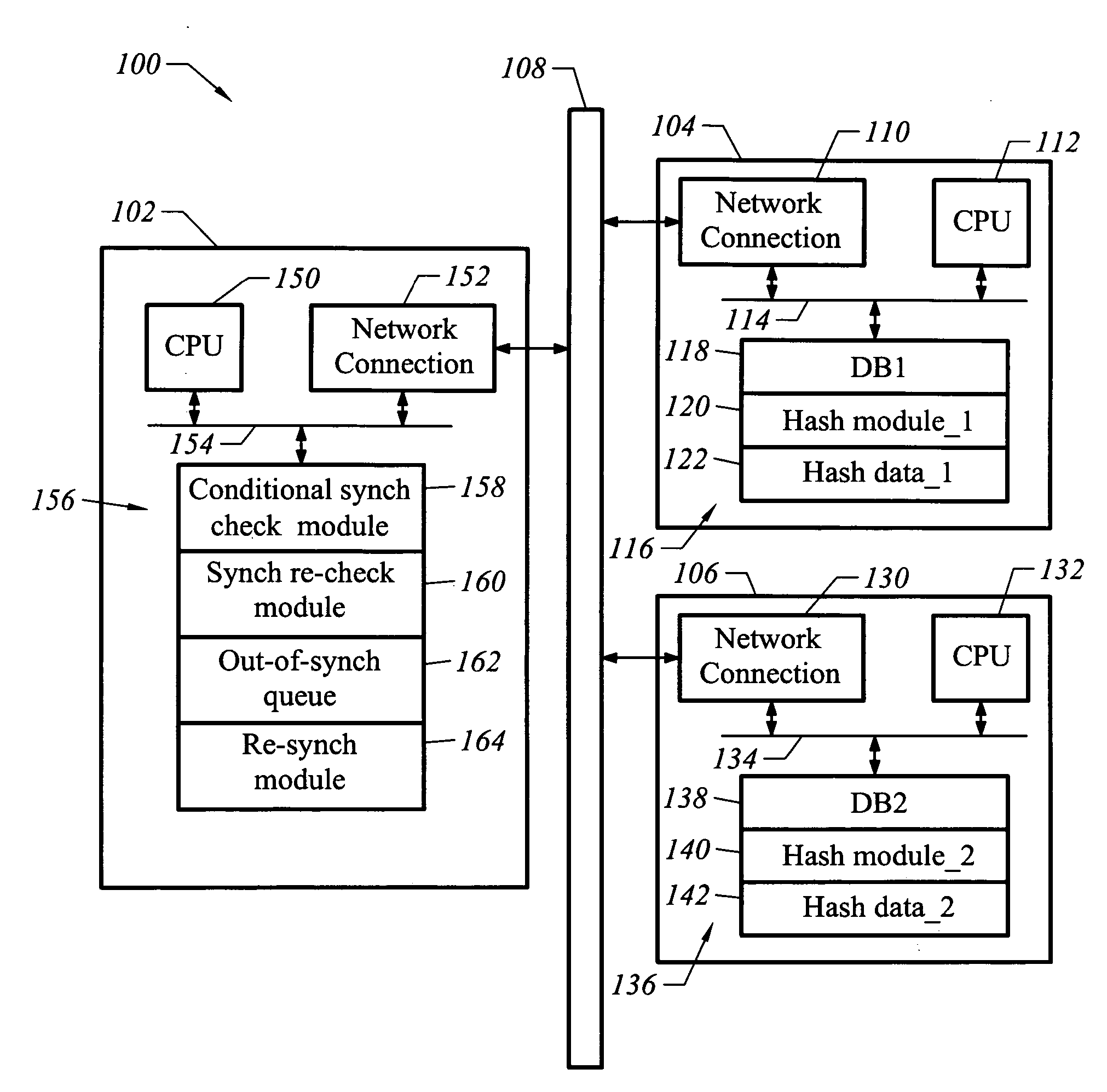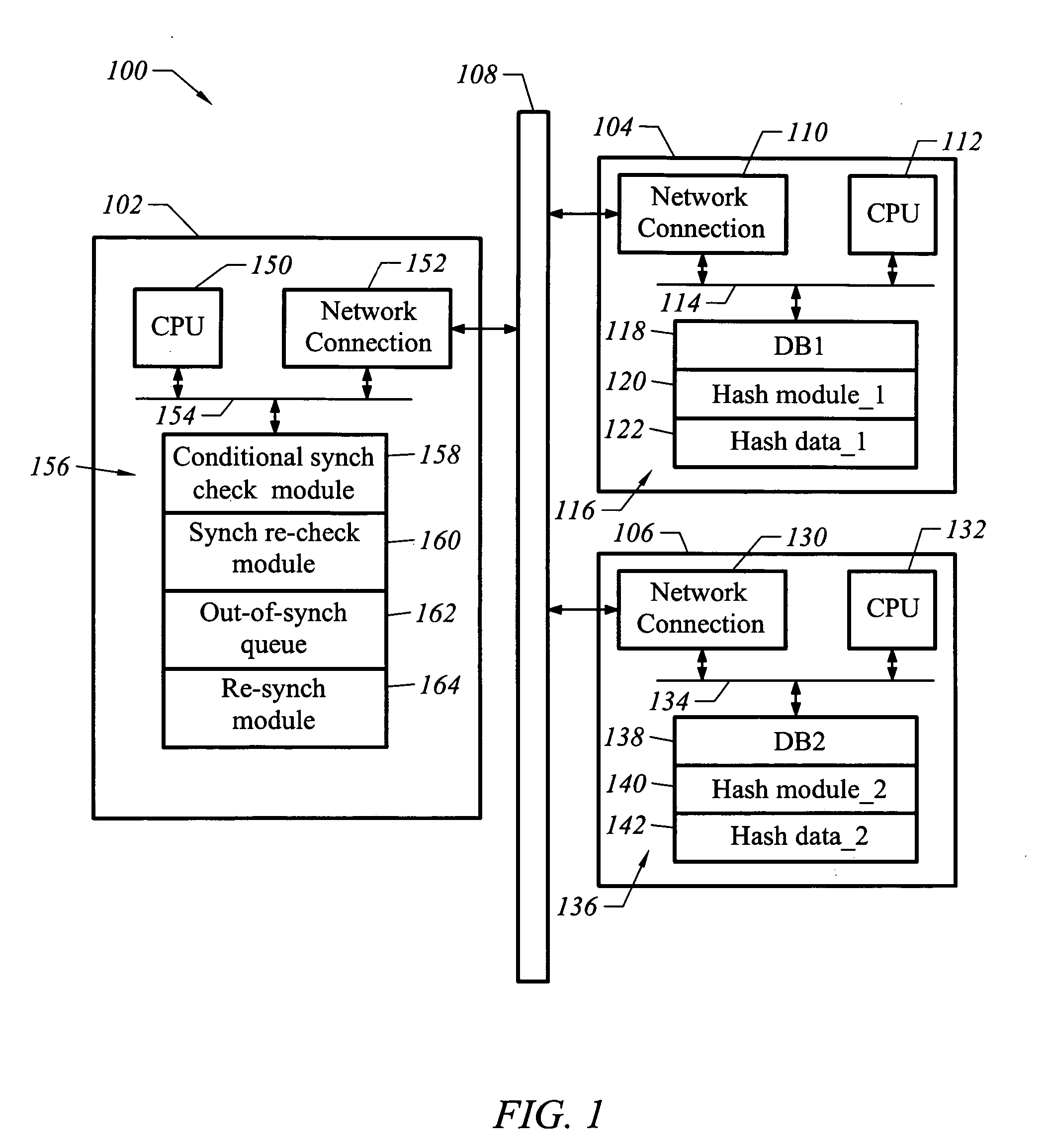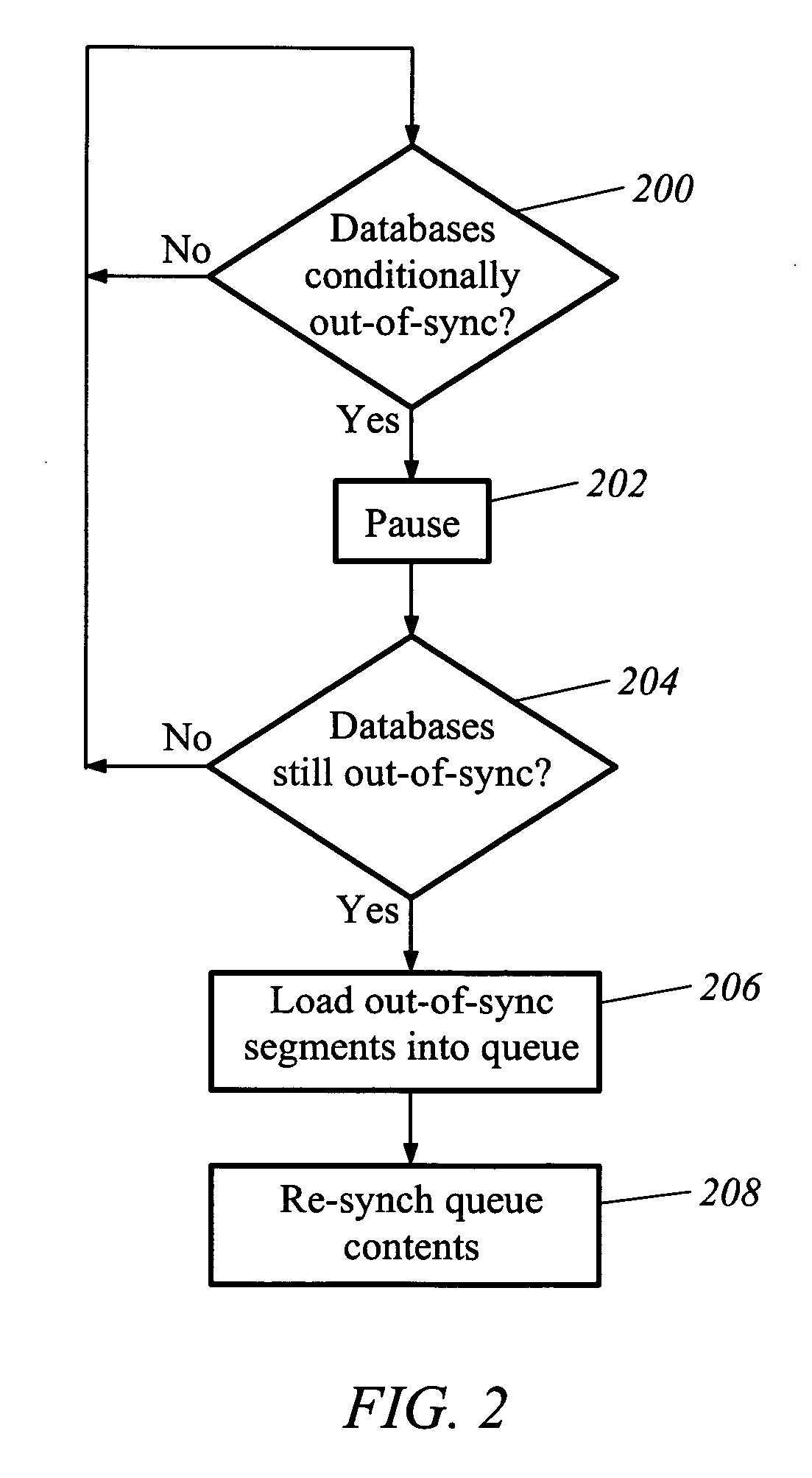Apparatus and method for identifying asynchronous data in redundant data stores and for re-synchronizing same
a technology of asynchronous data and data stores, applied in the field of apparatus and methods for identifying asynchronous data in redundant data stores and resynchronizing same, to achieve the effect of facilitating the processing of segments or subsets of databases over time, efficient housing of “in flight” table data, and large volume of data transported over the connection
Active Publication Date: 2006-09-21
ORACLE INT CORP
View PDF20 Cites 62 Cited by
- Summary
- Abstract
- Description
- Claims
- Application Information
AI Technical Summary
Benefits of technology
[0005] The invention provides an efficient mechanism for comparing structurally similar or dissimilar tables over connections that support limited bandwidth and/or where the volume of data transported over the connection is v
Problems solved by technology
There are a number of challenges
Method used
the structure of the environmentally friendly knitted fabric provided by the present invention; figure 2 Flow chart of the yarn wrapping machine for environmentally friendly knitted fabrics and storage devices; image 3 Is the parameter map of the yarn covering machine
View moreImage
Smart Image Click on the blue labels to locate them in the text.
Smart ImageViewing Examples
Examples
Experimental program
Comparison scheme
Effect test
 Login to view more
Login to view more PUM
 Login to view more
Login to view more Abstract
A computer readable medium includes executable instruction to compare databases. The executable instructions are configured to identify when a segment of a first database is conditionally out of synchronization with a corresponding segment of a second database to establish a conditionally out of synchronization state at a first time. Executable instructions allow a latency period after the first time in which changes are made to the first database and the second database. Executable instructions also determine after the latency period whether the segment of the first database is in synchronization with the corresponding segment of the second database. Executable instructions also populate a resynchronization table, which is used by a replication mechanism to bring asynchronous rows into synchronization.
Description
BRIEF DESCRIPTION OF THE INVENTION [0001] This invention relates generally to electronic data storage. More particularly, this invention relates to a technique for identifying asynchronous data in two different computer network locations that are supposed to maintain identical data. Further, the invention relates to re-synchronizing identified asynchronous data. BACKGROUND OF THE INVENTION [0002] Many enterprises store the same electronic data in more than one location. Reasons for this include improving the security and availability of this information in the event of computer outage, malfunction or disaster, as well as the ability for multiple entities and applications to manage the same information independently. As a consequence, when data changes in one data source it often needs to be copied to one or more secondary data sources, through a variety of possible mechanisms, including data replication. There are a number of challenges associated with data replication. For example,...
Claims
the structure of the environmentally friendly knitted fabric provided by the present invention; figure 2 Flow chart of the yarn wrapping machine for environmentally friendly knitted fabrics and storage devices; image 3 Is the parameter map of the yarn covering machine
Login to view more Application Information
Patent Timeline
 Login to view more
Login to view more IPC IPC(8): G06F17/00
CPCG06F11/1662G06F11/2097G06F17/30578G06F16/273
Inventor FISH, ERIC IANCORBIN, SCOTT ROGERSHEPHERD, JOELPEARSON, GEORGE ALLENRATHBUN, TIMOTHY LEE
Owner ORACLE INT CORP
Who we serve
- R&D Engineer
- R&D Manager
- IP Professional
Why Eureka
- Industry Leading Data Capabilities
- Powerful AI technology
- Patent DNA Extraction
Social media
Try Eureka
Browse by: Latest US Patents, China's latest patents, Technical Efficacy Thesaurus, Application Domain, Technology Topic.
© 2024 PatSnap. All rights reserved.Legal|Privacy policy|Modern Slavery Act Transparency Statement|Sitemap



